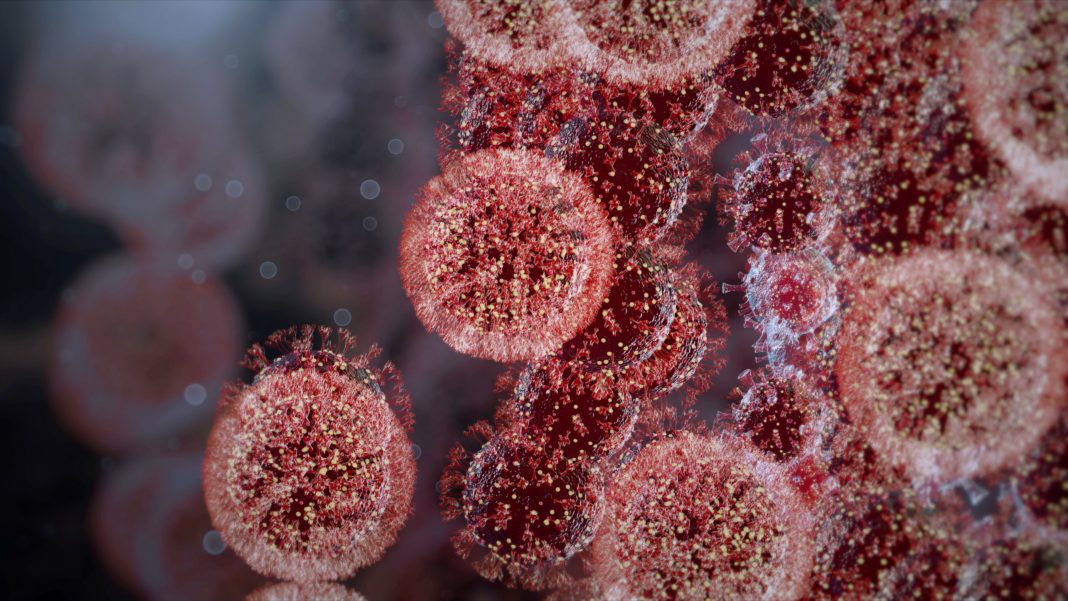Ruplekha Choudhurie, Senior Industry Analyst/Team Lead, walks us through nanomedicine, explaining a multipronged approach to tackle infectious diseases
The burgeoning incidence of infectious diseases (IDs), especially with a surge in chronic infections, pandemic outbreaks, and possible emerging biothreats, pose a significant challenge to public health. Globally, infectious diseases are one of the leading causes of mortality and morbidity, and effective management of these bacterial or viral diseases is a focus area for most healthcare systems. In addition to chronic infections such as HIV, HBV and TB, which have been prevalent and continue to affect millions, highly transmissible viruses like SARS-Cov-2, Zika, and Ebola viruses have impacted millions of lives and the economy. It is vital to prevent, treat and diagnose infectious diseases efficiently to manage them better.
While several FDA-approved antimicrobial and antiviral drugs and vaccines are on the market, toxicity, bioavailability, dosing regimens, and poor targeting are key limitations of traditional therapies. As a result, treatment of HIV, TB, HBV and other diseases requiring long-term treatment has been incredibly challenging, often leading to antibiotic-resistant infections and poor treatment outcomes. On a similar note, accurate and cost-effective diagnosis of infectious diseases, especially at PoC and in a scalable manner, has remained a roadblock.
Growing relevance of nanomedicine in infectious diseases
Nanomedicine is the umbrella term used for nanoscale materials used for diagnosis, therapeutics, and drug delivery and has been widely researched for several decades. Its utilization has grown exponentially over the last five years, with a pivotal role in targeted delivery and diagnostics for oncology, neurological diseases, and infectious diseases.
Nano formulations are useful for developing infectious disease therapeutics and vaccines, as nanoparticles (NPs) can be easily manipulated to alter physicochemical and functional attributes. Several FDA-approved antiviral drugs (for HIV and Herpes) have been nano-formulated in lipid and polymer-based carriers, while the first commercialized mRNA vaccine for COVID-19 was also formulated in lipid nanoparticles (LNPs).
In addition, the nanocarriers can be further functionalized via ligands, antibodies, or DNA to alter pharmacokinetics and targeting recognition to increase the efficacy and immunogenicity of drugs and vaccines. While nanoliposomes, lipid nanoparticles, and solid nanoparticles have been widely used in approved antiviral and antibacterial drugs, emerging carriers such as lipid-exosome hybrids, DNA nanobots, carbon nanotubes, quantum dots and multifunctional nanoparticles are being widely explored for delivery and as theranostics.
In addition to therapeutics, nanomedicine holds promise in diagnostics for accurate, rapid, and cost-effective testing. Besides metal nanoparticles such as gold and silver, which have been widely used for viral diagnostics, carbon nanomaterials have also shown promise in viral and bacterial detection.
Several IDs, such as HIV and TB, require long-term treatment and, in many cases, such long-term dosing regimens result in poor patient adherence and poor treatment outcomes. This is more prevalent in countries with low SDI (sociodemographic index), where the disease burden is higher, and treatment compliance is lower. Nano-based therapeutics that could simplify the dosing regimen have been actively developed, either as nano-encapsulated antimicrobials and antivirals (lipid or polymer) or nanostructured drugs with better solubility. In addition, nanoparticles can add layers of functionality to existing therapeutics and vaccines to trigger cell-based immune responses. Besides prophylactic vaccines, nanotechnology could be crucial in developing immunomodulatory therapeutics against chronic infections and MDR pathogens.
Paving the way for rapid, accessible diagnosis of IDs
Rapid, sensitive, and cost-effective diagnostics that can be used for early and scalable pathogen detection at PoC (point of care) are critical to contain and prevent the spread of infectious diseases. However, despite advances in molecular diagnostics, the costs, speed, and need for complex instrumentation are key bottlenecks to widespread adoption.
The pandemic necessitated the development of rapid, accurate and diagnostic tests that could be used even in resource-limited settings.
Nanomaterial-based biosensors have been developed for the detection of viral and bacterial infections. Gold nanoparticles have been widely used for antiviral detection. At the same time, carbon nanotubes and quantum dots are being developed for simple optical (colorimetric/fluorescent detection) diagnostics and enhancement of molecular testing (nucleic acid amplification).
Optical biosensing is the most widely used with nanosensors, and there is a growing body of research for both bacterial and viral infections. CRISPR-based diagnostics will usher in a paradigm shift in infectious disease testing due to its simplicity and scalability. For example, combining nanoparticles and CRISPR-Cas could be used to improve detection. In addition, bio-engineered nanomaterials with desirable physicochemical properties could be tuned for pathogenic virus detection – an example is plasmon resonance-based nano biosensors used for SARS-CoV-2 detection.
Nanoparticles – a double-edged sword in infectious disease management
In addition to being effective delivery carriers, several nanomaterials (metal NPs, carbon nanotubes) have demonstrated inherent antiviral and antibacterial activities. They are being used to develop innovative therapies for COVID-19 and other infections. Metal nanoparticle biosensors such as gold sensors have been widely used in ID diagnostics. They could be further functionalized with ligands and molecules with immunomodulatory effects for vaccination and as a therapeutic. Metal NPs such as gold, silver, and zinc have been studied for detection and delivery and are being further functionalized to improve therapeutic efficacy. Nanoparticles could be used as a theranostic tool to deliver drugs/vaccines and monitor response to therapy.
In the last few years, nanoparticle-based vaccines have garnered attention to improving stability, efficacy, immunogenicity, and targeting to achieve desired immune responses at a cellular level. Stability is critical for a vaccine to induce immunogenicity, and antigen needs to be shielded from degradation to facilitate
T cell-mediated immunity. LNPs (lipid nanoparticles) have been used as carriers for COVID-19 mRNA vaccines, and other nanocarriers are being explored for vaccine delivery.
Advanced nanomaterials such as quantum dots, fullerenes, DNA nanobots, hybrid nanoparticles, and natural nanoparticles (exosomes) promise clinical strategies, both as a diagnostic and for their innate antiviral properties.
What’s next? Bolstering precision and overcoming drug resistance
Nanocarriers can be modified and engineered to release drugs in the presence of certain stimuli to provide spatiotemporal control. Nucleic acid therapeutics and vaccines are extremely labile, and nanoparticle encapsulation (LNPs) of mRNA vaccines and siRNA therapeutics have been integral for their stability in vitro and in vivo. Nanocarriers prevent enzymatic degradation and keep the drugs stable under high pH. “Smart” nanomaterials can be designed to be stimuli-responsive that trigger drug release in response to a change in pH, charge, or temperature, enabling the spatiotemporal release of the drug.
Drug-resistant infections are a growing concern, and nanocarriers can be loaded with multiple therapeutic payloads (antibiotics) and surface-modified to target multi-drug resistant (MDR) pathogens. Aptamer-based nanomaterials are also being increasingly studied due to their synergistic effect in overcoming drug resistance and toxicity. MDR biofilm infections are emerging as a growing challenge, and disrupting biofilm formation is required to combat them. While the release of nanoparticles has been earlier associated with disturbance in microbial community ecology due to quorum sensing inhibition, this mechanism has been used to develop therapeutics to prevent biofilm infections. Both metal and carbon-based NPs have been studied as quorum-sensing inhibitors to target biofilms.
CRISPR/Cas system has emerged as a novel therapeutic strategy as targeted antimicrobials and addresses AMR infections. CRISPR/Cas therapeutics can be developed as precision medicine to target pathogenic or antibiotic- resistant bacteria while not impacting the rest of the microbes in the consortia. LNPs have been especially useful in delivering CRISPR/Cas, siRNA, mRNA and other nucleic acids, which face delivery and formulation challenges.
The possibility of further infectious disease outbreaks and a rise in MDR infections call for developing improved prophylactic, therapeutic and diagnostic strategies – nanomedicines could pave the way for next-gen antivirals and antibiotics which are more effective, less toxic and require less frequent dosing.








